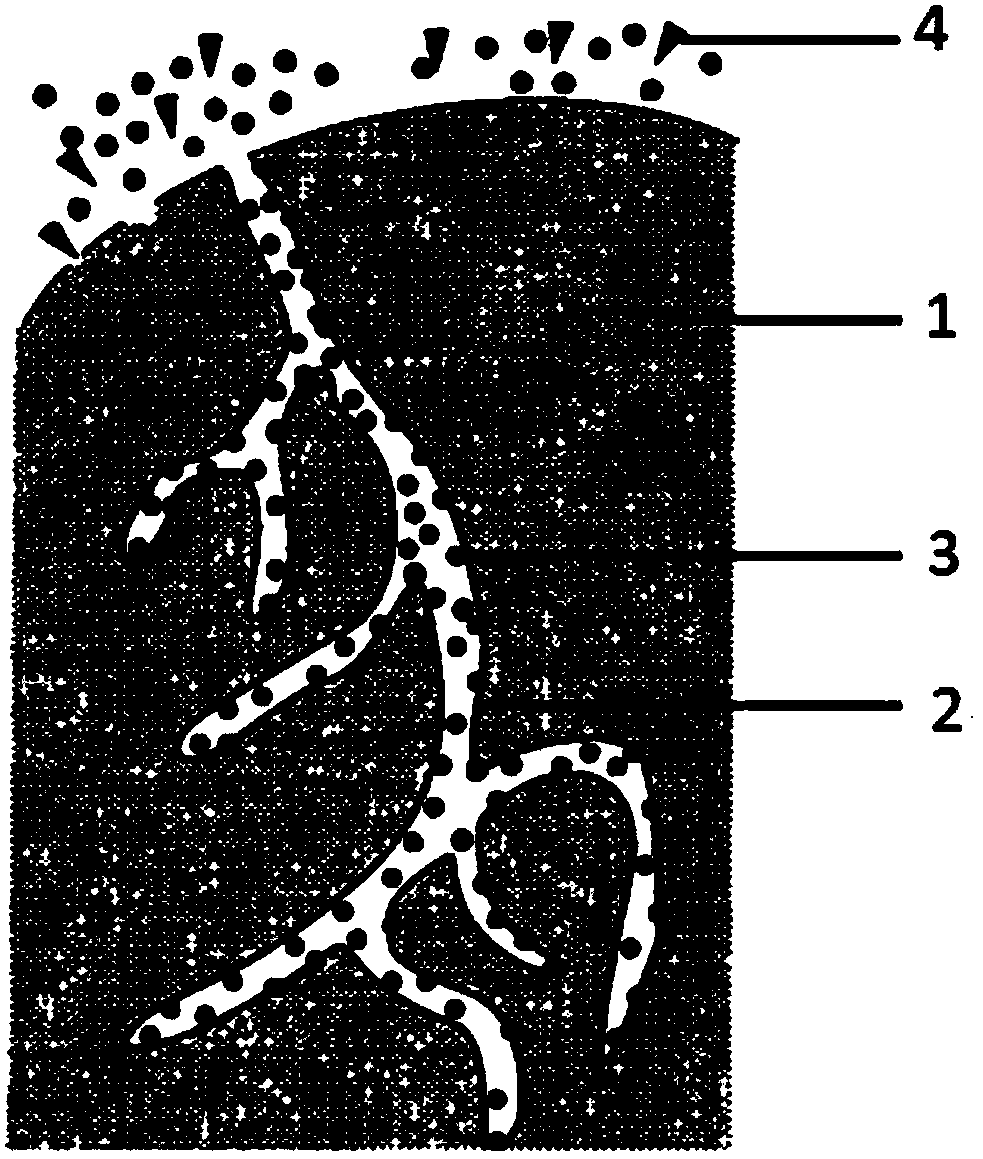Pathogenic organism pollution control method and application thereof
A technology of pathogenic microorganisms and biological ceramsite, which is applied in the field of water treatment, can solve problems such as the unstable number of Bdellovibrio and the difficulty in producing pathogenic microorganism pollution prevention and control effects, and achieve the effect of avoiding environmental and ecological risks
- Summary
- Abstract
- Description
- Claims
- Application Information
AI Technical Summary
Problems solved by technology
Method used
Image
Examples
Embodiment 1
[0035] 1. Prepare the ceramsite carrier: select biological ceramsite with a diameter of 10mm, a micropore diameter of about 300 microns, and a porosity greater than 40%, soak it in tap water for 24 hours, then clean it with tap water, and dry it at 105°C for backup. use;
[0036] 2. Preparation of host nutrient solution: 10.0 g of tryptone, 5.0 g of yeast powder, 10.0 g of sodium chloride and 1000 ml of pure water are used to prepare a nutrient solution of the host (non-pathogenic Escherichia coli), which is autoclaved for later use;
[0037] 3. Host nutrient storage: Soak the washed and dried biological ceramsite in the high-pressure sterilized host nutrient solution for 30 minutes, then take it out, dry it at room temperature and then soak it, repeat three times to obtain the pore inner wall for storage Bioceramsite for host nutrition;
[0038] 4. Prepare the host culture medium: non-pathogenic Escherichia coli (obtained by isolation and cultivation in the laboratory accord...
Embodiment 2
[0043] 1. Prepare the ceramsite carrier: select biological ceramsite with a diameter of 15mm, a micropore diameter of about 150 microns, and a porosity of 50%, soak it in tap water for 12 hours, then clean it with tap water, and dry it at 100°C for backup. use;
[0044] 2. Preparation of host nutrient solution: 10.0 g of tryptone, 5.0 g of yeast powder, 10.0 g of sodium chloride and 1000 ml of pure water were used to prepare a nutrient solution for non-pathogenic E. coli, and then autoclaved for later use;
[0045] 3. Nutrients stored by the host: Soak the biological ceramsite after drying and constant weight in the host nutrient solution after autoclaving for 30 minutes, remove it, dry it at room temperature and then soak it, repeat three times to obtain the inner wall of the pore Biological ceramsite attached to host culture substrate;
[0046]4. Prepare the host culture solution: non-pathogenic Escherichia coli (Escherichia coli) is inoculated into the nutrient solution of...
Embodiment 3
[0051] 1. Prepare the ceramsite carrier: select biological ceramsite with a diameter of 15mm, a micropore diameter of about 350 microns, and a porosity of 60%, soak it in tap water for 48 hours, then clean it with tap water, and dry it at 115°C for backup. use;
[0052] 2. Preparation of host nutrient solution: 10.0 g of tryptone, 5.0 g of yeast powder, 10.0 g of sodium chloride and 1000 ml of pure water were used to prepare a nutrient solution for non-pathogenic E. coli, and then autoclaved for later use;
[0053] 3. Nutrients stored by the host: Soak the biological ceramsite after drying and constant weight in the host nutrient solution after autoclaving for 30 minutes, remove it, dry it at room temperature and then soak it, repeat three times to obtain the inner wall of the pore Biological ceramsite attached to host culture substrate;
[0054] 4. Prepare the host culture solution: non-pathogenic Escherichia coli (Escherichia coli) is inoculated into the nutrient solution o...
PUM
| Property | Measurement | Unit |
|---|---|---|
| diameter | aaaaa | aaaaa |
| diameter | aaaaa | aaaaa |
| diameter | aaaaa | aaaaa |
Abstract
Description
Claims
Application Information
 Login to View More
Login to View More - R&D
- Intellectual Property
- Life Sciences
- Materials
- Tech Scout
- Unparalleled Data Quality
- Higher Quality Content
- 60% Fewer Hallucinations
Browse by: Latest US Patents, China's latest patents, Technical Efficacy Thesaurus, Application Domain, Technology Topic, Popular Technical Reports.
© 2025 PatSnap. All rights reserved.Legal|Privacy policy|Modern Slavery Act Transparency Statement|Sitemap|About US| Contact US: help@patsnap.com

